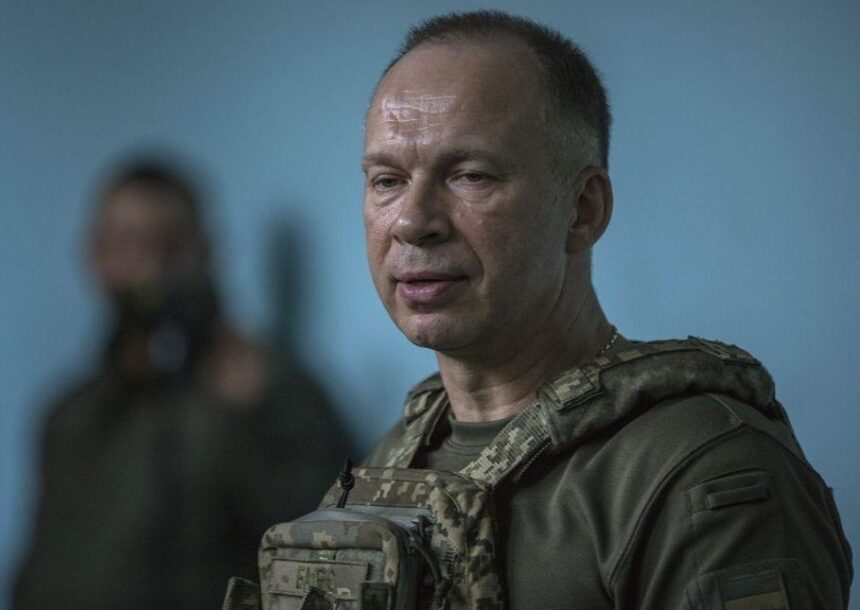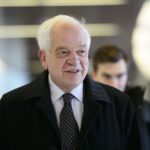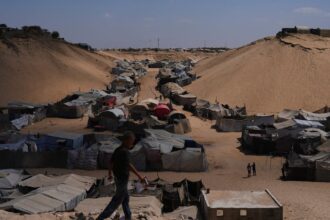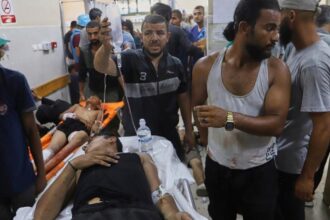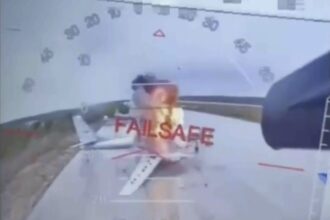In a concerning escalation that threatens to reshape Eastern European security dynamics, Russia has positioned nearly 700,000 troops along its border with Ukraine and in occupied territories, signaling preparations for a protracted conflict that could extend well beyond 2024, according to Ukrainian intelligence officials.
“What we’re witnessing is not a temporary surge but a systematic militarization of the border regions,” said Vadym Skibitsky, deputy head of Ukraine’s military intelligence directorate, during a briefing I attended in Kyiv last week. “Russia is transitioning to a war economy model reminiscent of Soviet-era mobilization tactics.”
The deployment represents one of the largest military concentrations in Europe since the Cold War. According to Ukrainian Defense Ministry data, Moscow has not only increased troop numbers but significantly expanded its production of artillery shells to approximately 250,000 monthly—a fourfold increase from pre-war levels.
Western intelligence sources confirm these assessments. “Putin appears to be betting on Western support for Ukraine waning over time,” said Dr. Elizabeth Carpenter, defense analyst at the International Strategic Studies Institute. “This massive deployment creates conditions for sustained combat operations that could continue for years, not months.”
The military buildup coincides with Russia’s implementation of a new draft system that makes evasion significantly more difficult. Digital conscription notices now carry the same legal weight as physical documents, effectively closing loopholes that previously allowed potential conscripts to avoid service by simply not accepting summons papers.
“The Kremlin is eliminating escape routes for draft-eligible men,” noted Skibitsky. “Combined with increased production capacity for weapons systems, this indicates Russia is preparing for a much longer confrontation than initially anticipated.”
Financial analysts monitoring Russia’s economic restructuring report the country has redirected approximately 40% of its federal budget toward defense spending—a level sustainable only through significant sacrifices in other sectors, including healthcare and infrastructure.
For Ukraine, this development presents profound strategic challenges. President Volodymyr Zelensky has repeatedly called for accelerated Western military aid, arguing that delays in weapons deliveries directly impact Ukraine’s defensive capabilities.
“Every week of delayed assistance translates to lost territory and lives,” Zelensky stated during a recent address to European leaders. “Russia is playing the long game, expecting Western resolve to crumble while they steadily accumulate resources for continued aggression.”
The situation raises difficult questions for Canadian policymakers and other NATO allies. Recent polling suggests support for continued military aid remains strong but faces growing economic pressures as the conflict stretches into its third year.
Within Ukraine, the news of Russia’s expanded military posture has strengthened resolve among many citizens. “We understand now this will not end quickly,” said Olena Petrenko, a volunteer coordinator I interviewed in Dnipro. “But surrendering is not an option when facing an enemy preparing for total domination.”
Military experts believe Russia’s strategy hinges on gradually wearing down Ukrainian resistance while simultaneously testing Western commitment. The coming months may prove decisive as both sides adjust to what increasingly appears to be a war of attrition.
As winter approaches and energy concerns again take center stage across Europe, one question looms large for policymakers and citizens alike: Is the democratic world prepared to match Russia’s demonstrated willingness to commit massive resources to a multi-year conflict, or will economic fatigue eventually force compromises that could reshape the European security architecture for generations?

